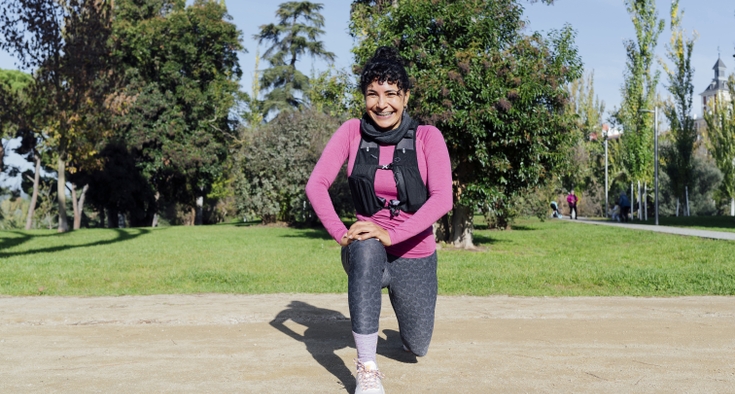If you’ve spent time among the fitness crowd lately, you’ve probably noticed that workouts are getting a weighted upgrade.
From neighborhood walkers to seasoned athletes, exercisers trying to boost their endurance are using weighted vests to strengthen their bones and muscles, and add intensity to their routines.
The trend spans generations, with men and women ranging from their 30s into their senior years embracing the gear — helped along the way by a wave of celebrity endorsements and lifestyle influencers touting its body benefits.
The idea of adding weight to workouts has been around awhile. Walking with a heavy rucksack, or weighted backpack, has long been part of military endurance training, and it became popular within the general population in recent years as a form of resistance training.

There hasn’t been a lot of research on the effects of weighted vests, but some studies have shown that they can help with bone health for postmenopausal women and with balance for older adults.
But experts caution: Not everyone should suit up with a weighted vest without guidance.
So we asked Dr. D. Landry Jarvis, an orthopedic surgeon at Novant Health Orthopedics & Sports Medicine - Ballantyne in Charlotte, to give his take on the trend and hear what he’d tell patients who are considering giving it a try.
Find the orthopedic care you deserve.
How can a weighted vest help boost your fitness level and overall health?
Weighted vests improve your muscular resistance, and that’s going to end up building more muscle. Having more muscle mass increases metabolism and improves balance — there’s a lot of benefits to that.
Whenever I meet runners, I’m always trying to discourage them from only being a runner, and instead saying, “Hey, you should do more resistance training, more squats, more gym work.” Essentially a weighted vest is a little bit of a substitution for going into the gym and just building muscular strength. That said, it’s not a replacement.
I would not recommend a weighted vest if you were jogging, but if you like to walk and you want to do more muscular resistance training, a weighted vest would be a simple solution to that.
If I want to buy a weighted vest, what should I look for in terms of weight and fit?
It should feel snug and comfortable, like it's not moving around on you. Starting at a weight of 5% to 10% of your body weight is appropriate. No question, if you were to start with a 40-pound vest and do a lot of walking or stair climbing, I would expect to see a lot of tendinitis-type issues. You have to start with low weight and build up, just like if you were training for a marathon.
Should you limit the amount of time you spend with a weighted vest on? What’s a good rule of thumb?
I don't think there are any guidelines. As long as you feel good while wearing it — your body feels good, you just want to get stronger and build stronger muscle — you could wear it all day, if you wanted to. I don't think there's any benefit if you wear it while sitting or lying down.
Some weighted vests are adjustable and allow you to add or subtract weight. If you have that type of vest, how often should you increase the weight?
It takes muscle about four to six weeks to acclimate to new challenges and trials that you're throwing at it. So if you start with a vest that’s 5% or 10% of your body weight and then a month or two into it if you still feel good, you have no added stress in your body as far as joints and tendons go, then you can start ramping it up. And again, take another month and go at that type of increment.
It only takes a few minutes to help you stay active for years.
What are the cautions you would give people? Are there risks to using a weighted vest?
I would avoid high-impact activities with weighted vests, like jumping or running. That’s just a lot of risk to take and it probably doesn't have a significant benefit. Especially if you're 35 or 45 and older, your knees will probably be really angry with you for doing that type of thing with a weighted vest.
Anyone who's dealing with tendonitis or joint pain, I would not recommend using a weighted vest. I think they're only indicated in somebody who's otherwise feeling healthy and feeling like they're trying to advance their training into something that's slightly more difficult than they were doing before.
What’s the bottom line with weighted vests?
Weighted vests can be healthy for people who want to elevate their exercise routines, but like so many other fitness trends, they’re not a magic pill that will replace the need for variety in movement, strength training or overall physical activity.
Resistance training: what the experts say
National health agencies have outlined how weighted and resistance-based exercises can support bone and muscle health.
The U.S. Department of Health and Human Services recommends at least 150 minutes of moderate-intensity physical activity for adults each week, as well as muscle-strengthening activities on two or more days a week that work all major muscle groups.
And the National Institute of Arthritis and Musculoskeletal and Skin Diseases recommends combining weight-bearing and resistance training exercises as well as balance training to build and maintain bones.










